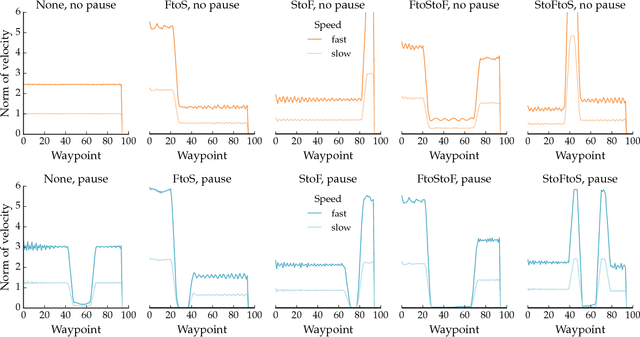Expressive Robot Motion Timing
Paper and Code
Feb 05, 2018



Our goal is to enable robots to \emph{time} their motion in a way that is purposefully expressive of their internal states, making them more transparent to people. We start by investigating what types of states motion timing is capable of expressing, focusing on robot manipulation and keeping the path constant while systematically varying the timing. We find that users naturally pick up on certain properties of the robot (like confidence), of the motion (like naturalness), or of the task (like the weight of the object that the robot is carrying). We then conduct a hypothesis-driven experiment to tease out the directions and magnitudes of these effects, and use our findings to develop candidate mathematical models for how users make these inferences from the timing. We find a strong correlation between the models and real user data, suggesting that robots can leverage these models to autonomously optimize the timing of their motion to be expressive.
 Add to Chrome
Add to Chrome Add to Firefox
Add to Firefox Add to Edge
Add to Edge